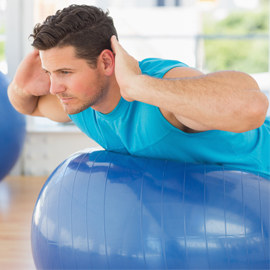Exercising after Prolotherapy
August 2011
 Prolotherapy is a medical treatment used for damaged or weak ligaments and tendons that heal poorly due to an inadequate blood supply. The treatment involves a solution that causes controlled inflammation in order to initiate tissue healing. Although you shouldn’t attempt vigorous exercise after your prolotherapy, light exercise, consisting of cardiovascular, balance, resistance and flexibility exercises, is recommended.
Prolotherapy is a medical treatment used for damaged or weak ligaments and tendons that heal poorly due to an inadequate blood supply. The treatment involves a solution that causes controlled inflammation in order to initiate tissue healing. Although you shouldn’t attempt vigorous exercise after your prolotherapy, light exercise, consisting of cardiovascular, balance, resistance and flexibility exercises, is recommended.
- Cardiovascular Exercises – By increasing your heart rate and moving your body, blood flow to the affected ligaments and tendons increases. Light cardiovascular exercise, such as slow and easy walking or bicycling, is encouraged. Cardiovascular exercises can also help you to lose weight. If your injury is due to obesity, your doctor may also recommend a medical weight loss program.
- Balance Exercises – When a person has a weak or damaged ligament or tendon, their perception of their limbs may be distorted. Balance exercises, such as standing on one leg, can improve your body’s ability to determine limb position.
- Resistance Exercises – If your prolotherapy treatment was on a ligament, light resistance may be performed by using a light weight. However, if your treatment was on a tendon, you should wait several days before placing resistance on that specific tendon.
- Flexibility Exercises – In between your prolotherapy treatments, you’ll need to stretch to increase your flexibility. We recommend using the assistance of a Osteopathic Physician or certified personal trainer to learn the correct way to stretch. The stretches should be gentle and held for no longer than 30 seconds. It’s important not to overstretch your ligaments or tendons because that can interfere with your healing process. As you stretch, you’ll be increasing your joint flexibility and improving your circulation.
- Balance the Pain Control – Make sure to consult your osteopathic physician regarding adjustments to your other tissues such as muscles, fascia, and skeleton so he can adjust them to optimize healing properties, and decrease the pressure on your ligaments or tendons. He may utilize other Osteopathic therapy modalities such as myofascial release, trigger point injections, or manual adjustments.

